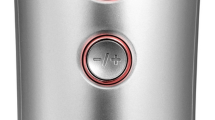Abstract
The aging of the integumentary system, makes the skin flaccid, wrinkled, dehydrated and irregularity in pigmentation. The increase in the life expectancy of the population has increased the concern with aging, good appearance, quality of life, thus providing greater self-esteem and acceptance in social life. The high frequency generator, a low-cost and widely used resource, has relevant impacts on the repair process and provides anti-inflammatory and bactericidal effect. Objective, to evaluate the self-esteem of women after the use of the high frequency generator in the treatment of signs of skin aging. The study followed ethical precepts, according to Resolution 466/12 of the National Health Council and was approved by the CEP (4,599,360). The participants received the application of a high frequency generator in the periorbital and nasolabial regions, for 30 min, 3 times a week, for 8 weeks. Twenty-six women with a mean age of 54.4 years participated in the study, most of them had dry and oily skin, sometimes wearing sunscreen, and 35% had phototype III skin according to the Fitzpatrick scale, with grade II and III photoaging, according to Glogau. Improved self-esteem was obtained during the sessions, and good satisfaction with the treatment. Overall cosmetic improvement was significant, with 50% of participants rating “much better”, 42% “much better” and 8% “better” using the global scale. Treatment with the high frequency generator had satisfactory effects on the skin, allowing good appearance and increasing self-esteem. Noninvasive procedure, easy to apply, which increases the patient's treatment.
Access this chapter
Tax calculation will be finalised at checkout
Purchases are for personal use only
Similar content being viewed by others
References
Addor, F.: Influence of a nutritionl suplemente containing collagen peptides on the properties of the dermis. Surg. Cosmet. Dermatol. 2, 116–121 (2015). https://doi.org/10.5935/scd1984-8773.201572636
Fitzpatrick, T.B.: The validity and practicality of sun-reactive skin types I through VI. Arch. Dematol. 6, 869–871 (1988)
Videira, I.F.S., Moura, D., Magina, S.: Mechanisms regulating melanogenesis. An. Bras. Dermatol. 1, 76–83 (2013). https://doi.org/10.1590/s0365-059620130001000009
Bravo, B.S.F., Azulay, D.R., Luiz, R.R., et al.: Oral isotretinoin in photoaging: objective histological evidence of efficacy and durability. An. Bras. Dermatol. 4, 478–486 (2015). https://doi.org/10.1590/abd1806-4841.20153703
Arango, A.C.M., Munoz, S.V.F., Sanclemente, G.: Mechanisms of skin aging. Iatreia Abr-Jun 2:160–170 (2017)
Barbara, E.C.O.S., Brito, V.S.C., Rocha, W.R.S., et al.: Uso da micropuntura no tratamento de rugas. Fisioterapia Bras. 4, 481–488 (2017)
Tobin, D.J.: Introduction to skin aging. J. Tissue Viability 26, 37–46 (2016)
Zhang, S., Duan, E.: Fighting against skin aging: the way from bench to bedside. Transplante Cell. 5, 729–738 (2018). https://doi.org/10.1177/0963689717725755
Pilkington, S.J., Belden, S., Miller, R.A.: The tricky tear trough: a review of topical cosmeceuticals for periorbital skin rejuvenation. J. Clin. Aesthet. Dermatol. 9, 39–47 (2015)
Oliveira, L.M.N.: Utilização do ozônio através do aparelho de alta frequência no tratamento da úlcera por pressão. Rev. Bras. Ciên. Saúde Paraíba 30, 41–46 (2011)
Pereira Sá, H., et al.: Estudo comparativo da ação do laser GaAlInP e do gerador de alta frequência no tratamento de feridas cutâneas em ratos: estudo experimental. Conscientiae saúde 3, 360–366 (2010)
Silva, A.R.S., Santos, A.C.O., Gonçalvez, V.M., et al.: Radiofrequência no tratamento de rugas faciais. Rev. Universidade Ibirapuera São Paulo 7, 38–42 (2014)
Feitosa, B.V., Palma, A.L.R.: Estudo dos efeitos da radiofrequência no tratamento facial em mulheres entre 30 e 50 anos. Pesquisa, Soc Desenvolvimento 2, e28811225696 (2022). https://doi.org/10.33448/rsd-v11i2.25696
Renno, F.C., Renno, R.C., Nassif, P.W.: Atualização em Fotoprotetores. RevUningá 3:56 (2014)
Mota, J.P., Barja, P.R.: Classificação dos fototipos de pele: análise fotoacústica vesus análise clínica. UNIVAP/IP&D/FASBio, 2561–2564 (2002)
Nagashima, H., Hanada, K., Hashimoto, I.: Correlation of skin phototype with facial wrinkle formation. Photodermatol. Photoimmunol. Photomed. I 15, 2–6 (1999)
Kligman, A.M., Zheng, P., Lavker, R.M.: The anatomy and pathogenesis of wrinkles. Br. J. Dermatol. 113, 37–42 (1985)
Avelar, C.F.P., Veiga, R.T.: Como entender a vaidade feminina utilizando a autoestima e a personalidade. Rev adm empres Ago 4, 338–349 (2013)
Martins, A., Silva, J.T., Fréz, A.R., et al.: Efeito bactericida do gerador de alta frequência na cultura de Staphylococcus aureus. Fisioterapia e Pesquisa 19, 153–157 (2012)
Korelo, R.I.G.: Gerador de alta frequência como recurso para tratamento de úlceras por pressão: estudo piloto. Fisioter Mov Curitiba 4, 715–724 (2013)
Traina, A.A.: Efeitos biológicos do ozônio diluído em água na reparação tecidual de feridas dérmicas em ratos. Tese de Doutorado Faculdade de Odontologia Universidade de São Paulo (2008). https://doi.org/10.11606/T.23.2008.tde-08042009-150340
Carvalho, G.F., Silva, R.M.V., Mesquita, F.J.J.T., et al.: Avaliação dos efeitos da radio freqüência no tecido conjuntivo. Especial Dermatologia 68, 10–25 (2011)
Acknowledgment
We would like to acknowledge the contributions of the funding agency CAPES for the financial support of the present research.
Conflict of Interest
The authors declare that they have no conflict of interest.
Author information
Authors and Affiliations
Corresponding author
Editor information
Editors and Affiliations
Rights and permissions
Copyright information
© 2024 The Author(s), under exclusive license to Springer Nature Switzerland AG
About this paper
Cite this paper
Santos, A.F. et al. (2024). High Frequency Device as a Therapeutic Resource in the Treatment of Skin Aging: Evaluation of Female Self-esteem. In: Marques, J.L.B., Rodrigues, C.R., Suzuki, D.O.H., Marino Neto, J., García Ojeda, R. (eds) IX Latin American Congress on Biomedical Engineering and XXVIII Brazilian Congress on Biomedical Engineering. CLAIB CBEB 2022 2022. IFMBE Proceedings, vol 98. Springer, Cham. https://doi.org/10.1007/978-3-031-49401-7_61
Download citation
DOI: https://doi.org/10.1007/978-3-031-49401-7_61
Published:
Publisher Name: Springer, Cham
Print ISBN: 978-3-031-49400-0
Online ISBN: 978-3-031-49401-7
eBook Packages: EngineeringEngineering (R0)




